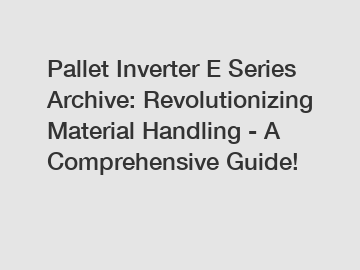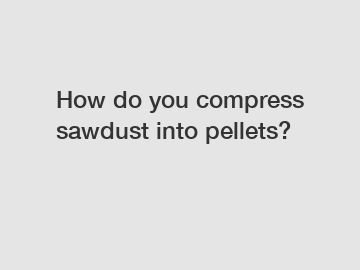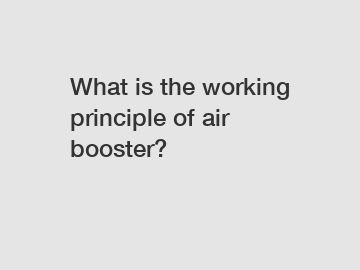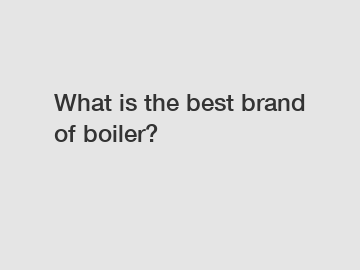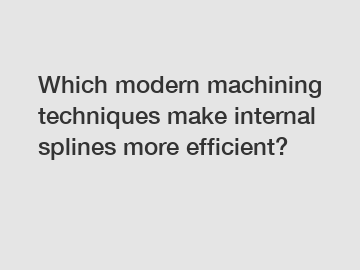Centrifugal vs Roots-Type Superchargers
Centrifugal vs Roots-Type Superchargers
About Roots Type Superchargers
By Jim Middlebrook
The question always arises: why do the auto manufacturers (OEs) nearly always choose a roots type supercharger? The one word answer is price. Sure, there may be other influences such as the supplier's requirement for tier-one status, or the extreme marketing efforts that no centrifugal manufacturer can match, due to economies of scale. But cheap pricing to the OEM's is compelling enough to make up for all the deficiencies associated with the roots type supercharger. Please note that the roots type can be called a supercharger, but not a compressor, because it is not; it's an air mover.
One misconception is about the airflow path for these Roots superchargers: the air does not flow through or between the rotors but rather around, on the housing sides within the voids of the rotors. The roots supercharger traps air in a chamber between the rotor and the housing, in the void between the rotor's lobes, and transports this trapped air to the outlet side, at the engine's intake manifold. By virtue of moving air into the manifold at a rate higher than the engine consumes it, pressure is built. Every time the chamber of trapped air opens to the manifold, the previously pressurized manifold air reverse flows into the chamber until pressure is normalized, then the chamber is closed and exhausted as the rotors mesh together. This 'reversion', plus the internal leakage between each rotor as well as the housing, combined with the tortuous flow path the air must follow, is why the roots type supercharger is the least efficient of the types available. Additionally, this pulsed delivery results in a loud and unpleasant shriek at higher speeds. While the aforementioned process can offer reasonable performance at low pressures, say 5 to 6 psig, operation at one atmosphere (14.7 psig) and above, clearly shows the limitations of the device. When operating a Roots supercharger at higher pressures, it is probable that half of the input power is consumed to make heat rather than pressure. This would roughly indicate a very low adiabatic efficiency of 50%, or below. It is possible for a centrifugal to operate this inefficiently also, but it would be due to an exceptionally poorly designed and sized installation and certainly not typical.
When we use the term supercharger efficiency, we mean adiabatic efficiency as an expression of how well the supercharging process works. All of this supercharging process is about increasing air density (pressurizing or compressing air) and an inefficient supercharger will put more heat into the air during this process, and thus reduce density, than an efficient one. Further, that heat isn't free, it was bought by a parasitic power drain on the engine.
Some manufacturers will attempt to mislead or confuse shoppers by using the term volumetric efficiency instead of adiabatic, so they can display a very favorable number, usually in the ninety percent range. The term volumetric efficiency only refers to how well the chambers are being filled and has little to do with how well the supercharger is working; this term only applies to positive displacement devices and not to centrifugals. Others, even large OEM suppliers, will sometimes offer sales materials or compressor maps showing unlikely performance and/or supercharger efficiencies, (they definitely have a straw in the Kool-Aid).
Some are eager to point out that the roots type supercharger will make boost [pressure] at very low engine RPM1. This is true; they make more boost than a centrifugal at low speed and less at high speed, but this feature is much less helpful than it would first appear. First, excessive boost cannot be utilized at these low speeds. On most engines the ignition timing must be significantly retarded to avoid destructive detonation that it is very probable that no net increase in power is realized especially considering the parasitic drive losses. Second, the newer high performance engines with variable valve timing and inlet runners have more than enough low speed power to exceed the tire traction available. Third, low engine speed is not where power is made. Fourth, when roots advocates point out the 'area under the curve' they usually refer to a huge misrepresentation of what the curve should look like. The higher boost levels that are common today are not shown and no one can explain the mathematical significance of this phantom area! Further they ignore the heat soak and inherent 'nosing over' performance of the roots type at higher engine speed, right when a high performance vehicle should pull the hardest.
For similar output, a roots type supercharger will outweigh a centrifugal by several times, and will generally require a larger, heavier charge cooling system. Also it is necessarily placed in the worst possible location: way up high and forward, right on top of all the other weight. A competent circuit driver can feel this unwelcome weight.
Adding a roots type supercharger to an engine that has tuned runners, or variable runner, intake system will usually require the removal of the tuned system and the loss in those free benefits. A centrifugal does not require this removal and all the engineered-in tuning can still be appreciated.
The rotating mass of a typical roots type supercharger for a V8 is large, with very high inertia compared to most centrifugal compressors. The power it takes to accelerate that inertia, to speed it up or slow it down can be huge and this is independent of actually doing any useful work.
So, with a roots type supercharger you get:
A noisy, heavy, high inertia, poorly placed, air-moving device that makes too much boost when you can't use it and not enough when you can, that is as good a heater as it is a supercharger, that shows even lower performance after a full warm up. And when the profilers flash that big horsepower number on You tube, you can bet on two things, it was a first 'pull' with a cooled engine and they won't show a second 'pull' because it will be much lower, and a third pull, even more so.
Centrifugal compressors are in a different league. They can easily make more pressure and flow than a roots type and are much more efficient, especially at higher pressure ratios.
1From the February issue of Car and Driver 'My Not-So-Little Pony' Ford SVT chief engineer Jamal Hameedi was quoted 'We already had more first-gear torque than we needed, so this makes it easier to launch the car'. This in reference to raising the final drive ratio on the Mustang GT500.
The Numbers
Test point:
Flow: 71.2 M/min (960 CFM)
Pressure: 21.72 PR (10.6 psig)
Ambient:
Temp. 70°F
Pressure: 29.83 In. Hg. (14.65 psia)
i
(street supercharger) Volumetric efficiency 85% N/A Adiabatic efficiency 52% 74% Drive power 51 kw (69 HP) 35 kw (48 HP) Discharge temp. 114°C (241°F) 83°C (190°F) Discharge temp increase 77°C (171°F) 49°C (120°F) Hot soak effects Devastating Incidental
The above information was sourced from a major roots type manufacturer's printed compressor map and Vortech's compressor map for a V-3 Si compressor. The above test point was used to be consistent with a GM LS7 installation as used in the article. A normal centrifugal supercharger installation would utilize the V-3 Si compressor's superior 78% peak efficiency.
But wait, there's more!
In the Road & Track article ('Corvette Fever', April ), a naturally aspirated Corvette Z06 was compared with a roots supercharged ZR1. Other than the engine, the cars were virtually identical, (tires, wheels, brakes, options, and so on). The ZR1, because of the supercharger, did weigh 95 pounds more than the Z06 but it also had a bigger front splitter. The cars were driven on the same track, by the same driver, on the same day. The ZR1 is supposed to have 133HP more than the Z06 (638 vs 505), but I think this 'rating' must be before things warm up. In the article: ''Tommy Milner was about 1 sec. faster around Spring Mountain in the Z06 than in the ZR1.' Well, that pretty much says it all. Oh wait, the Lapping Analysis in the article shows that the Z06 was faster on the straightest part of the track, and that does say it all. The roots supercharger actually made the car slower than naturally aspirated due to heat soak. A centrifugal supercharger suffers none of these shortcomings.
So, when choosing a supercharger system: Do you want power, or do you want a decoration?
When to Use a Roots Blower or Rotary Lobe Pump
Selecting the right equipment for your application is crucial to achieving optimal performance and efficiency. In industrial processes, Roots Blowers and Rotary Lobe Pump are two types of equipment commonly used for various applications. In this article, we will discuss the differences between these two equipment types, their advantages, and disadvantages, and when it is appropriate to use them.
Roots Blower
Definition and operation
A Roots Blower, also known as a positive displacement blower, is a mechanical device that generates air flow by forcing air or gas through a pair of helical rotors. As the rotors rotate, they trap and compress air, which is discharged into the system. Roots Blower operates by volumetric displacement and is commonly used in applications that require low-pressure air or gas.
Goto Benyuan to know more.
Explore more:Who is developing autonomous semi trucks?
Unleashing the Power of the G27: A Comprehensive Guide
What is the difference between a fork over stacker and a straddle stacker?
Revolutionize Your Stamping Projects with Duopress Stamping Machine: How to Achieve Professional Results Effortlessly!
Why is the Manual Wire Straightener Machine the top choice for B2B purchases?
What are the disadvantages of hydraulic systems?
How do you make a good packaging design?
Advantages and disadvantages
One of the advantages of Roots Blower is its high volumetric efficiency, which allows it to generate large amounts of air or gas with minimal power consumption. It is also simple in design and requires minimal maintenance. However, Roots Blower is unsuitable for high-pressure air or gas applications, as it has a limited pressure ratio.
Applications
Roots Blower is commonly used in various industrial processes, including:
- Wastewater treatment ' for aeration and mixing of wastewater
- Pneumatic conveying ' for conveying powders, pellets, and granular materials
- Chemical processing ' for handling gases, vapors, and corrosive fluids
- Other applications include vacuum generation, combustion air supply, and fluidization.
Rotary Lobe Pump
Definition and operation
A Rotary Lobe Pump, a positive displacement pump, is a mechanical device that pumps liquid by trapping it between two intermeshing rotors. As the rotors rotate, they seal and displace fluid from the last chamber to the next. Rotary Lobe Pump operates by volumetric displacement and is commonly used in applications requiring high-precision and gentle liquid handling.
Advantages and disadvantages
One of the advantages of the Rotary Lobe Pump is its high efficiency and accuracy in handling viscous liquids. It can also handle liquids with varying viscosities and temperatures. However, Rotary Lobe Pump is unsuitable for applications that involve transporting gases alone. It is designed to hold liquids and can cause operational issues if used for gas transportation.
Applications
Rotary Lobe Pump is commonly used in various industries, including:
- Food processing ' for pumping viscous food products such as creams, sauces, and doughs
- Pharmaceuticals ' for pumping high-value and sensitive liquids such as vaccines and drugs
- Chemical processing ' for handling sharp and corrosive liquids such as acids and solvents
- Other applications include paper and pulp processing, oil and gas, and wastewater treatment.
Choosing the Right Equipment
Factors to consider
When choosing between a Roots Blower and a Rotary Lobe Pump, there are several factors to consider, including:
- Flow rate ' the amount of air or liquid required for the process
- Pressure ' the amount of force necessary to move the air or liquid through the system
- Temperature ' the temperature range of the air or liquid
- Viscosity ' the thickness or resistance of the air or liquid to flow
- Efficiency ' the amount of energy required to generate the required flow rate and pressure
- Maintenance ' the level of supervision necessary to ensure optimal performance and longevity
- Cost ' the initial and ongoing costs of the equipment.
Comparison between Roots Blower and Rotary Lobe Pump
Performance
Roots Blower is suitable for applications that require low-pressure air or gas, with a maximum pressure ratio of 1.5. On the other hand, Rotary Lobe Pump is ideal for applications requiring high-pressure liquids, with a pressure range of up to 20 bar.
Applications
A roots Blower is commonly used in applications such as wastewater treatment and pneumatic conveying, while Rotary Lobe Pump is widely used in applications such as food processing and pharmaceuticals.
Cost
A roots Blower is generally less expensive than Rotary Lobe Pump, especially for lower flow rates and pressure requirements. However, Rotary Lobe Pump may be more cost-effective for higher flow rates and pressure requirements due to its higher efficiency.
Maintenance
Roots Blower requires minimal maintenance; the main maintenance requirement is regular oil changes. Rotary Lobe Pump requires more care, including routine inspection and replacement of seals and bearings.
Conclusion
Selecting the right equipment for your industrial process is crucial to achieving optimal performance and efficiency. In this article, we have discussed the differences between Roots Blower and Rotary Lobe Pump, their advantages and disadvantages, and when it is appropriate to use them. Considering the abovementioned factors, you can choose the equipment that best suits your application and ensures optimal performance and longevity.
FAQs
Q: What is the main difference between a Roots Blower and Rotary Lobe Pump?
A: The main difference between a Roots Blower and a Rotary Lobe Pump is the type of fluid they handle. The roots Blower handles air or gas, while Rotary Lobe Pump handles liquid.
Q: What are the applications of Roots Blower?
A: Roots Blower is commonly used in wastewater treatment, pneumatic conveying, and chemical processing applications.
Q: What are the applications of a Rotary Lobe Pump?
A: Rotary Lobe Pump is commonly used in food processing, pharmaceuticals, chemical processing, as well as handling of sludge and wastewater in municipal and industrial settings.
Q: How do I determine the flow rate and pressure requirements for my application?
A: The flow rate and pressure requirements for your application depend on several factors, including the type of fluid being handled, the distance the fluid needs to travel, and the desired flow rate and pressure at the end of the system. Consulting with a specialist in fluid handling equipment can help you determine the appropriate flow rate and pressure for your application.
Q: What are the maintenance requirements for the Roots Blower and Rotary Lobe Pump?
A: Roots Blower requires minimal maintenance; the main maintenance requirement is regular oil changes. Rotary Lobe Pump requires more care, including routine inspection and replacement of seals and bearings.
Want more information on Buy Roots Blower? Feel free to contact us.
Which industries benefit the most from the efficiency of automatic screw fastening robots?
Solving SMT PCB Conveyor Woes: Expert-Recommended Products
Bop in Drilling: Exploring Types & Tools for Safer Operations
Which Metal Sheet Laser Cutting Machine Offers the Best Precision Cutting?
The Ultimate Cereal Bagging Machine: Maximize Efficiency, Minimize Waste, and Boost Production!
What are the advantages of buying a complete engine cylinder head assembly?
How to Build an Efficient Induction Heater: Your Ultimate Guide to Saving Energy & Time!



